Presentation:
22 y/o female tertiary student presented with a 6 month history of routine headache symptoms.
She explained that in the morning she would be fine but each afternoon she would develop a severe tension headache that would remain for several hours or until she went to sleep.
The headache was most concentrated around the suboccipital muscles bilaterally and around the left upper cervical spine segments.
She mentions she has had neck pain and stiffness in the past but just figured it was related to her lecture/study posture.
She is feeling unusually tired and lethargic (more so over the last two months) but denies any signs of illness and/or infection.
There are no changes in her vision, hearing, sense of taste or smell.
There have been no significant changes to her home or routine, including; bed, pillow, bags, shoes, perfume, glasses, or lighting.
She denies any nausea or vomiting.
She walks daily and participates in yoga 3x/week.
Poor posture is something she has know she has for a long time – but has not actively tried to improve it.
The headache does not wake her at night.
She has not had any unexplained weight changes.
She has consulted her general practitioner about her headache symptoms, they suggested a head/brain CT was unnecessary, and that the likely cause of her presentation was poor habitual postures.
She explains using the phone/computer – pain develops after 5 – 15 min
She also mentions stress results in suboccipital tension which then develops into her tension heaache.
Examination:
Neurological examination; unremarkable.Reflexes intact bilaterally. Muscle strength good bilaterally.
Cranial nerve examination; unremarkable.
Cervical range of motion; Flexion = 45 deg. Extension = 35 deg. Right rotation = 70 deg. Left rotation = 80 deg. Right lateral flexion = 20 deg. Left lateral flexion = 20 deg.
Leg length assessment; right pelvic deficiency (RPD)
Cough/Valsalva; negative
Vascular Testing; Hautant’s/Maigne’s (Seated) & VBI (Supine); No abnormalities detected.
Palpation; sensitivity and restriction at right sacroiliac joint, T6.7.8 T2/3, C2 left sided.
Treatment:
Education & Advice.
Myofascial Therapy
Active releases bilaterally of the sternocleidomastoid, anterior scalenes, middle scalenes and posterior scalenes, and levator scapular.
Cervico-Thoracic Mobilisations. (seated)
Cervical SNAGS (A seated facet joint mobilisation technique),
L5 Right posterior and Left inferior side postures adjustments
T2/3/ seated tractional adjustments
C2 left supine bilateral index contact – rotational adjustment.
Home Exercise:
Self supine suboccipital massage immediately following a shower.
Outcome:
After 1 consultation in the first week, the patient reported no headaches for 2 days initially. Then the headache returned on day 3 but was less severe and only lasted for 1 hour. Day 4 and most of day 5 there was no headache. Day 6 the headache returned again, only lasting for 1 hour.
After 2 consultations by the end of week 2, the patient reported having no headache for 4 days. It returned on day 5 for 1 hour and she feels it was poor posture related having been at university the whole day.
After 4 consultations by the end of week 6, the patient reported her headaches return in the afternoon for 1-2 hours every 7-9 days.
She is no longer feeling fatigued and lethargic.
We will continue with a strategic manual treatment approach over the next 6 weeks and reassess her progress.


Comments are closed.